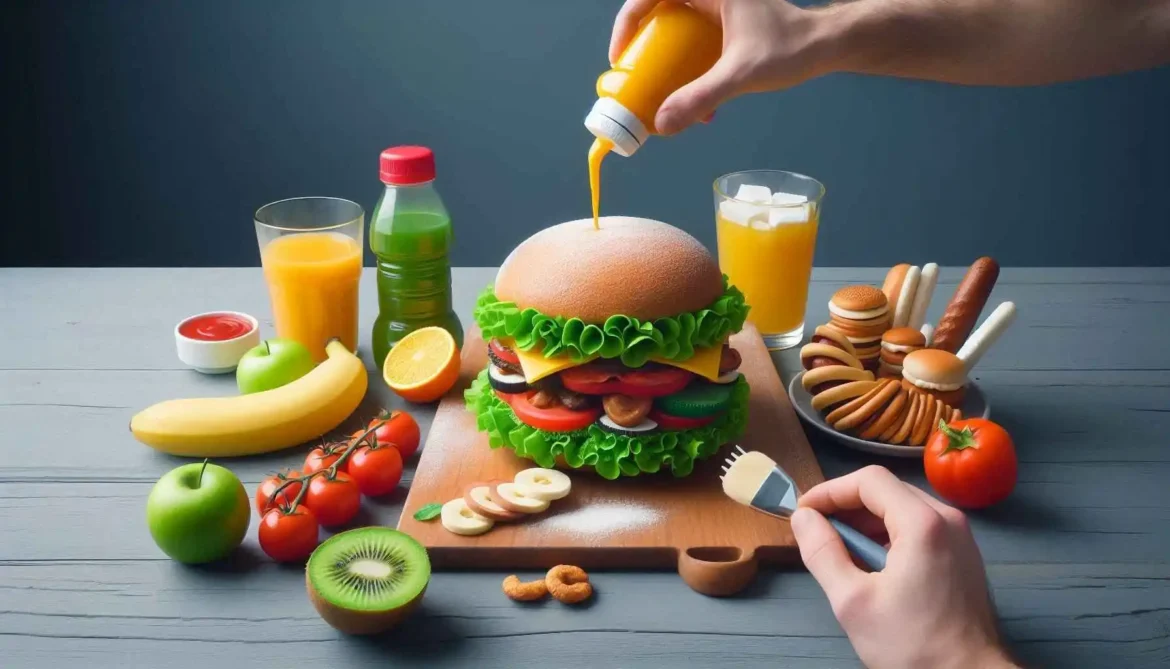Despite the advanced materials and techniques, creating convincing fake food isn’t without its challenges:
- Realism under Scrutiny: High-definition cameras capture every minute detail. A prop that looks real from afar might look obviously fake in a close-up if the texture or color isn’t perfect.
- Light Interaction: Real food often has a certain translucency or way it interacts with light (e.g., how light passes through jelly or reflects off grease). Replicating this can be difficult.
- Wet vs. Dry Appearance: Making something look authentically wet, sticky, or greasy without actually using liquids that might drip or dry out requires specialized techniques and finishes.
- Weight and Feel: While appearance is primary, sometimes the way a prop feels or handles is also important, requiring careful material selection to mimic the weight or firmness of real food.
Conclusion
The creation of realistic fake food for film and television is a testament to human ingenuity and artistic skill. It’s a specialized area within the props department that solves numerous practical problems on set, ensuring that the visual storytelling isn’t hampered by wilting lettuces or melting ice cream.
The next time we find ourselves captivated by a lavish spread or a perfectly plated dish on screen, we can appreciate the hidden artistry at play – the molding, casting, painting, and detailing that went into creating that edible illusion. It’s a craft that allows filmmakers to achieve seamless continuity, control the visual narrative, and keep the focus squarely on the story, all while making our taste buds believe something beautiful and delicious is right there in front of us. It’s just another layer in the complex, magical process that brings the worlds we see on screen to vibrant, albeit sometimes artificial, life.
FAQs
- Q: Why is fake food used in TV shows and movies?
A: Fake food is used to maintain consistency, avoid spoilage, and ensure multiple takes without the food looking different or unappetizing. - Q: What materials are commonly used to create fake food?
A: Materials like wax, resin, silicone, latex, plastic, and foam are commonly used to create realistic fake food. - Q: How do prop makers make fake food look fresh and appealing?
A: They use paint, airbrushing, and gloss finishes to mimic textures, colors, and moisture, making the food appear fresh and appetizing. - Q: Are real foods ever used on set instead of fake food?
A: Yes, real food is sometimes used, especially when actors need to eat, but it’s often supplemented with fake food for close-ups or long scenes. - Q: How do prop chefs replicate the texture of food?
A: They sculpt and mold materials to mimic the texture, then paint and finish surfaces to replicate the look of real food textures. - Q: Can fake food be made to look like hot, steaming dishes?
A: While fake food itself doesn’t steam, effects like dry ice or steam machines are used to simulate heat and steam. - Q: How long does it take to create a realistic fake food prop?
A: Depending on complexity, it can take from a few hours to several days to create a highly detailed fake food item. - Q: Is fake food reusable on set?
A: Yes, fake food props are durable and can be reused multiple times during filming. - Q: How do prop makers ensure fake food looks realistic under different lighting conditions?
A: They test the food under set lighting and adjust colors and finishes to avoid unnatural reflections or dullness. - Q: Can fake food be eaten by actors?
A: Generally, no. Fake food is not edible and is used only for visual purposes; edible food is provided separately when needed. - Q: What’s the difference between fake food for TV and movies versus commercials?
A: Commercials often require more detailed, close-up shots, so fake food for commercials may be more meticulously crafted than for general TV or movies. - Q: How do prop makers replicate shiny or greasy foods?
A: They use glossy finishes, clear resins, or oils to mimic the shine and grease on foods. - Q: Are there any health or safety concerns with fake food props?
A: Yes, materials used must be non-toxic and safe to handle, especially around actors and crew. - Q: How do they create fake beverages that look real?
A: Fake beverages are often made from colored gels, resins, or tinted water with additives to simulate bubbles or viscosity. - Q: Can fake food be customized for specific diets or cultural foods?
A: Yes, prop makers can create fake food that reflects specific cuisines, dietary preferences, or culturally accurate dishes. - Q: How do they replicate baked goods like bread or cakes?
A: Baked goods are often sculpted from foam or resin, then painted to mimic crusts, crumbs, and frosting textures. - Q: What role do food stylists play in creating fake food?
A: Food stylists collaborate with prop makers to ensure fake food looks appetizing and fits the scene’s aesthetic. - Q: How is fake ice created for drinks?
A: Fake ice is often made from clear acrylic or resin pieces shaped like ice cubes. - Q: Do fake foods smell like real foods?
A: Typically, fake food does not have a scent, but sometimes artificial scents are added for realism. - Q: How do they create fake fruits and vegetables?
A: These are usually sculpted from plastic, resin, or wax and painted to replicate color and texture. - Q: How do they simulate condensation on cold drinks?
A: They use glycerin or other clear substances applied to the surface to mimic water droplets. - Q: Can fake food withstand outdoor filming conditions?
A: Yes, fake food is designed to be durable and can withstand heat, cold, and humidity better than real food. - Q: How do they make fake food look like it’s been partially eaten?
A: Prop makers sculpt bite marks and imperfections into the fake food for realism. - Q: What techniques are used to replicate creamy or saucy textures?
A: Silicone or gelatin-like materials are used to mimic the consistency and glossiness of sauces and creams. - Q: Are there any famous examples of fake food in movies or TV shows?
A: Yes, shows like “Friends” and movies like “Julie & Julia” have used fake food extensively for close-up shots. - Q: How do they create fake food that looks like it’s cooking or frying?
A: They use props combined with visual effects, like smoke machines and lighting, to simulate cooking. - Q: Is CGI ever used instead of fake food?
A: Yes, CGI can be used for food in some cases, but practical fake food is often preferred for realism. - Q: How do prop makers replicate the translucency of foods like gelatin?
A: They use clear or tinted resins and carefully control thickness to mimic translucency. - Q: What challenges are faced when making fake seafood?
A: Replicating the shine, texture, and color of seafood can be difficult, requiring detailed painting and finishing. - Q: How do they ensure fake food matches the actor’s diet or allergies?
A: Since fake food is inedible, it’s safe for actors with allergies; real food given is tailored to dietary needs. - Q: Are there specialized artists who create fake food?
A: Yes, prop food artists specialize in creating realistic fake food for film and TV. - Q: How is fake food stored between shoots?
A: It’s stored in climate-controlled environments to prevent damage or discoloration. - Q: Can fake food be 3D printed?
A: Yes, 3D printing is increasingly used to create precise shapes and textures for fake food. - Q: How do they create fake food for historical or futuristic settings?
A: They research period-appropriate foods or design imaginative futuristic dishes based on the story’s needs. - Q: How do fake food makers replicate the look of crispy or crunchy foods?
A: They use textured materials and paint effects to simulate crispiness and crunchiness. - Q: Do fake food props ever need repairs during filming?
A: Yes, prop teams often fix or touch up fake food between takes to maintain appearance. - Q: How do they make fake food look like it’s steaming hot?
A: They combine fake food with steam machines or dry ice effects to simulate heat. - Q: What is the cost range for creating fake food props?
A: Costs vary widely, from a few dollars for simple items to hundreds for detailed, custom pieces. - Q: How do fake food makers replicate the layering in sandwiches or cakes?
A: They sculpt individual layers separately and assemble them to mimic real food construction. - Q: Are there any environmental concerns with using fake food?
A: Some materials used are not biodegradable, so productions are increasingly seeking eco-friendly alternatives.
Disclaimer: The content on this blog is for informational purposes only. Author’s opinions are personal and not endorsed. Efforts are made to provide accurate information, but completeness, accuracy, or reliability are not guaranteed. Author is not liable for any loss or damage resulting from the use of this blog. It is recommended to use information on this blog at your own terms.



